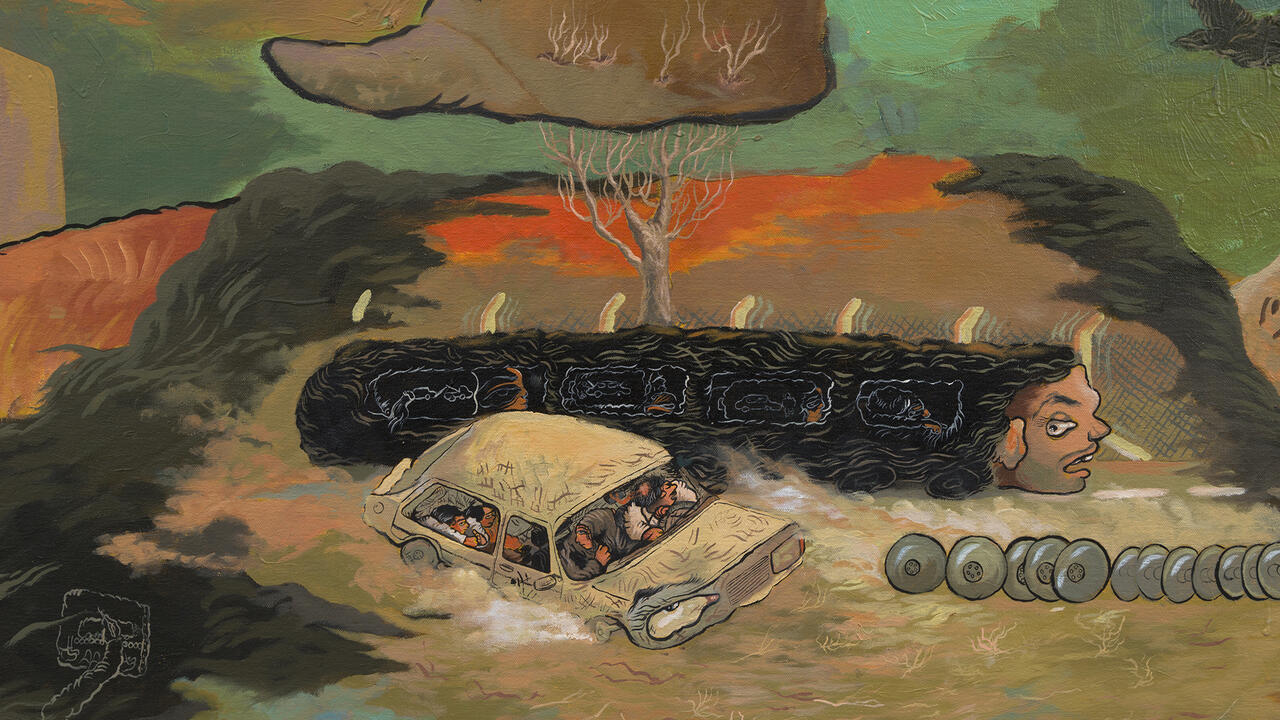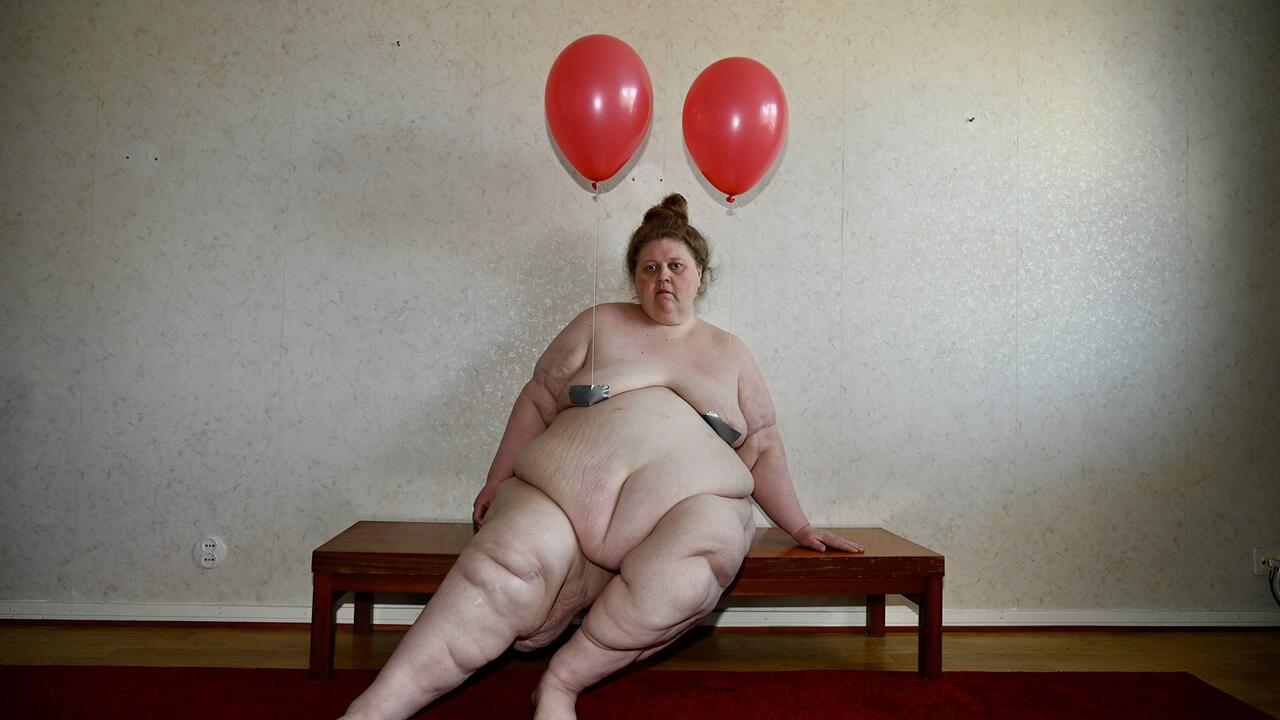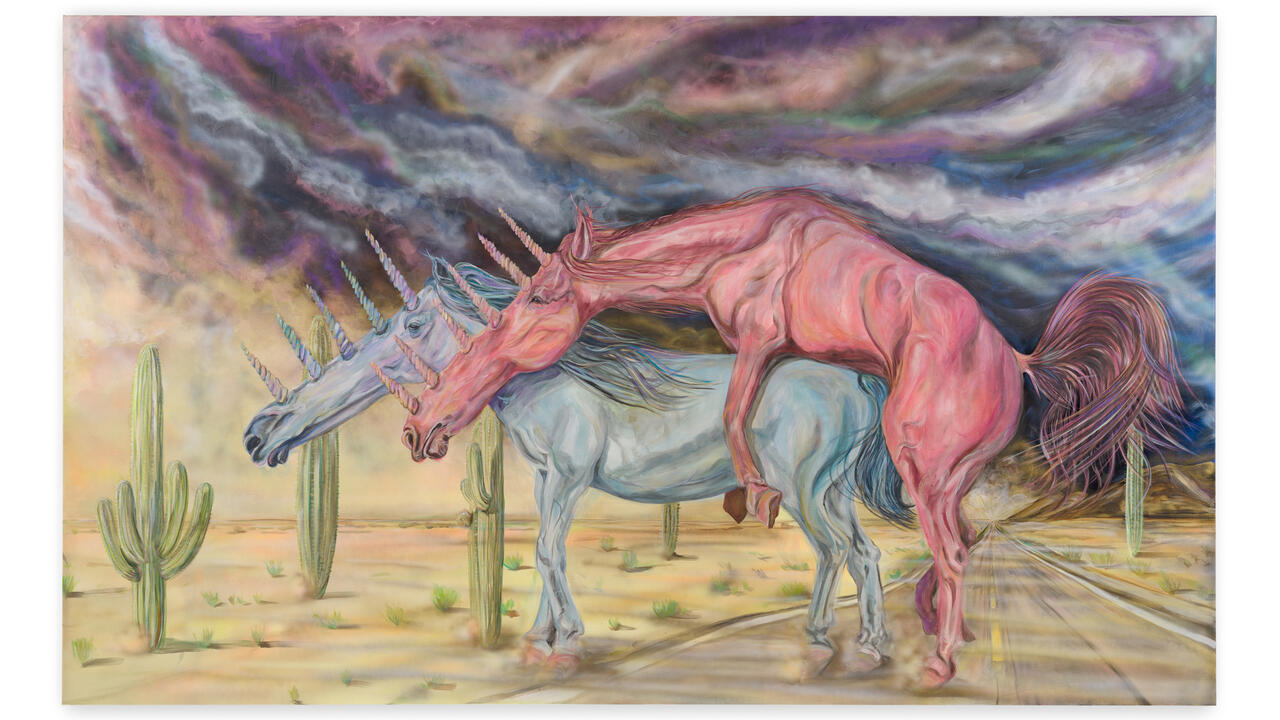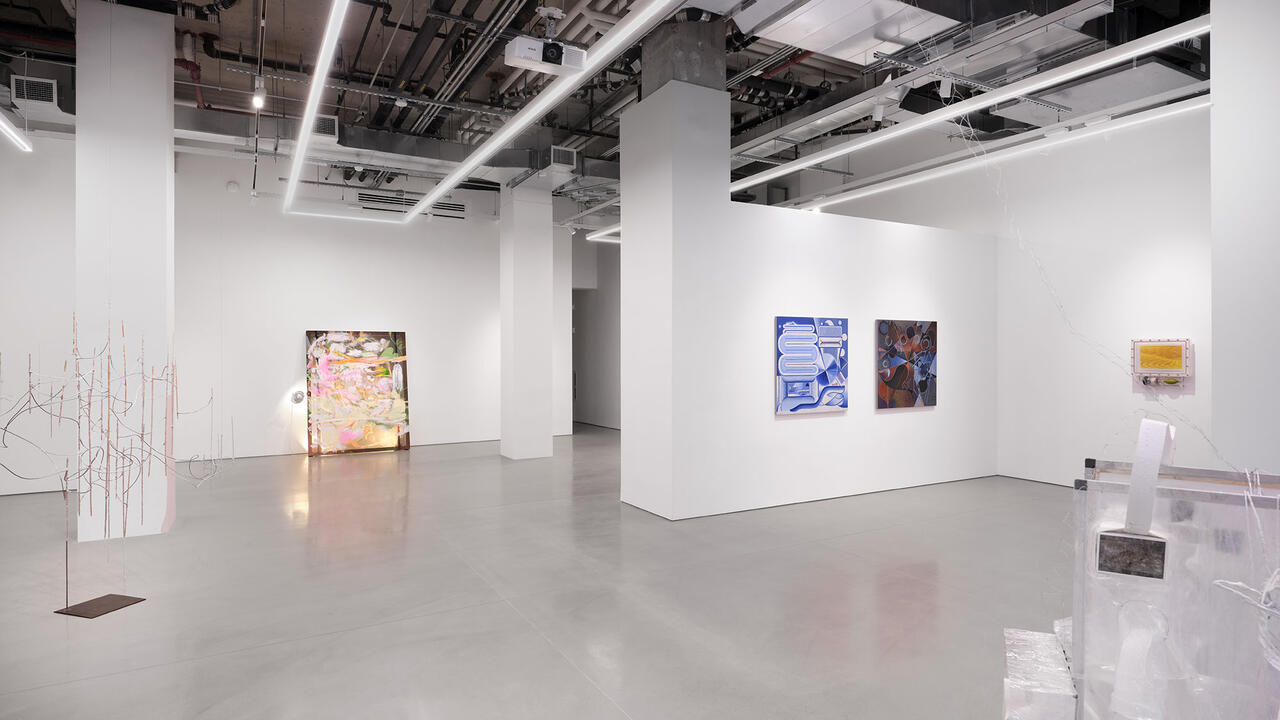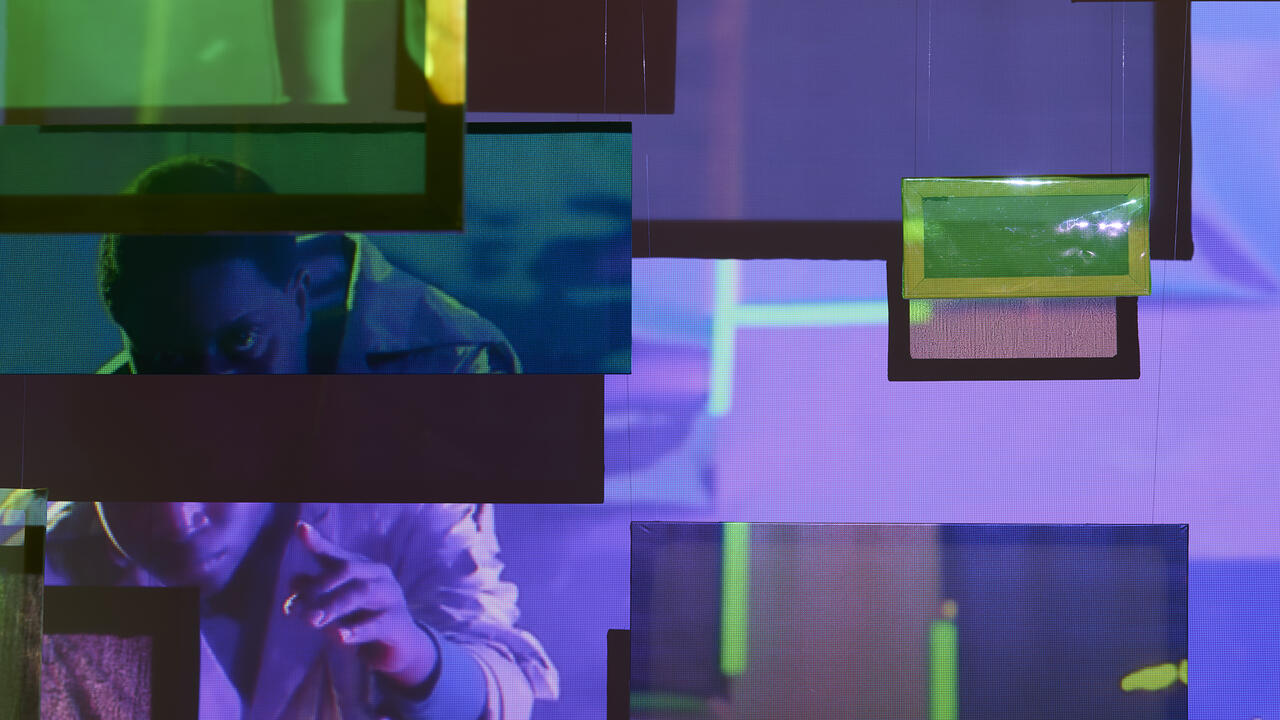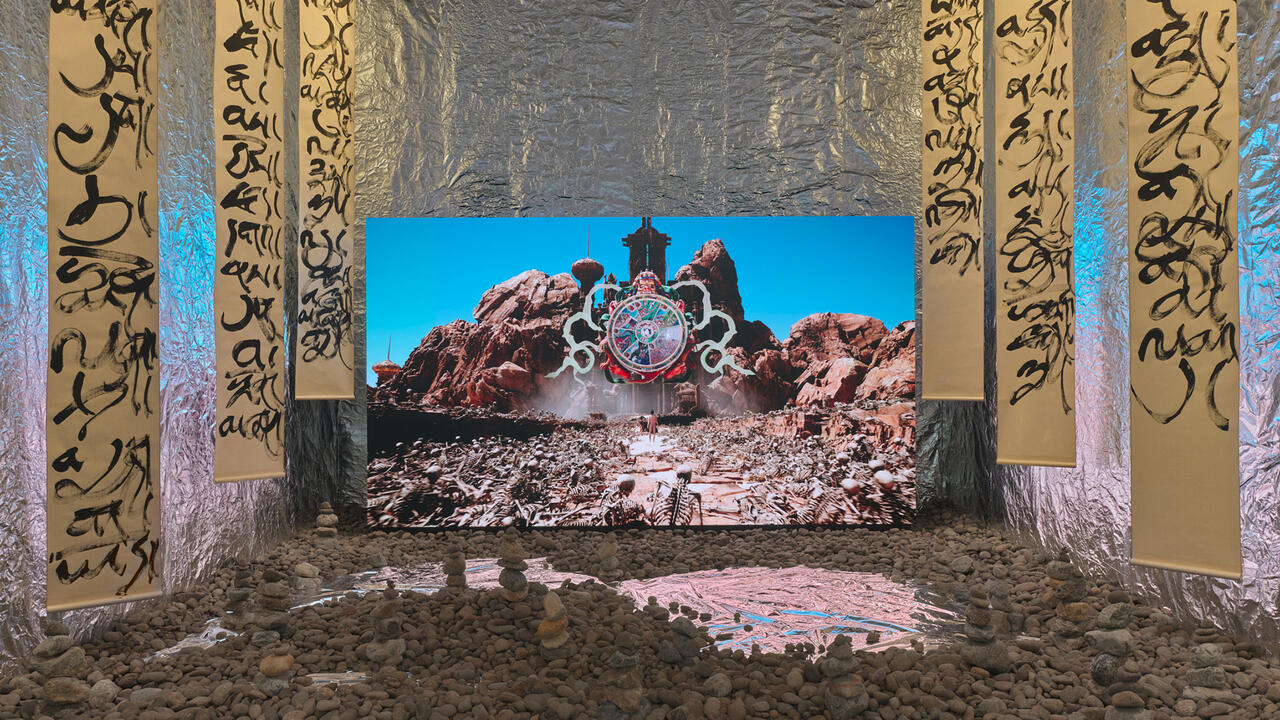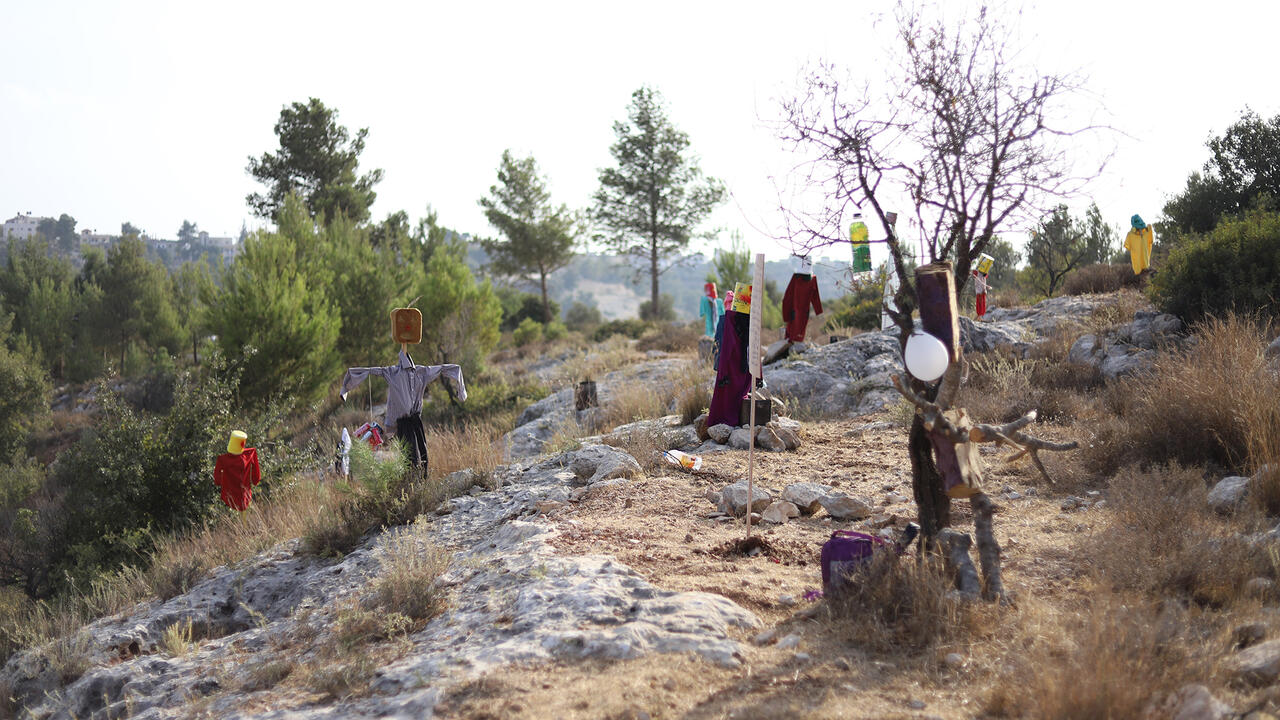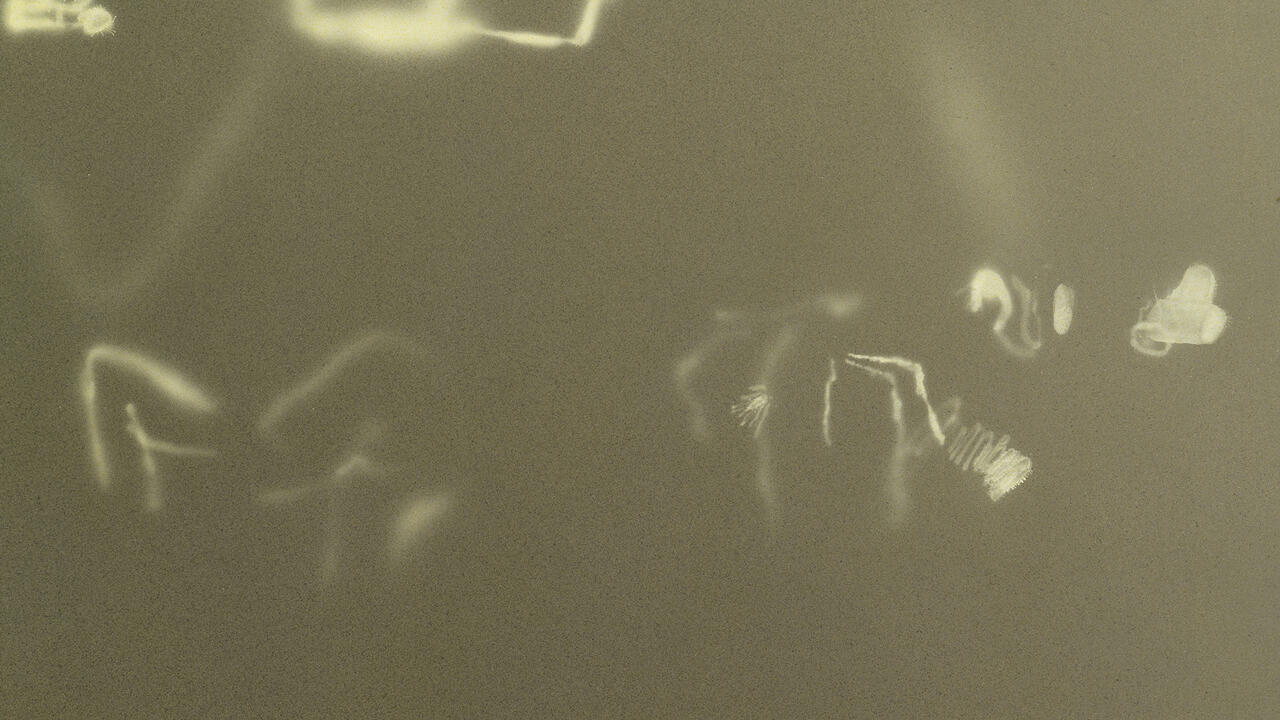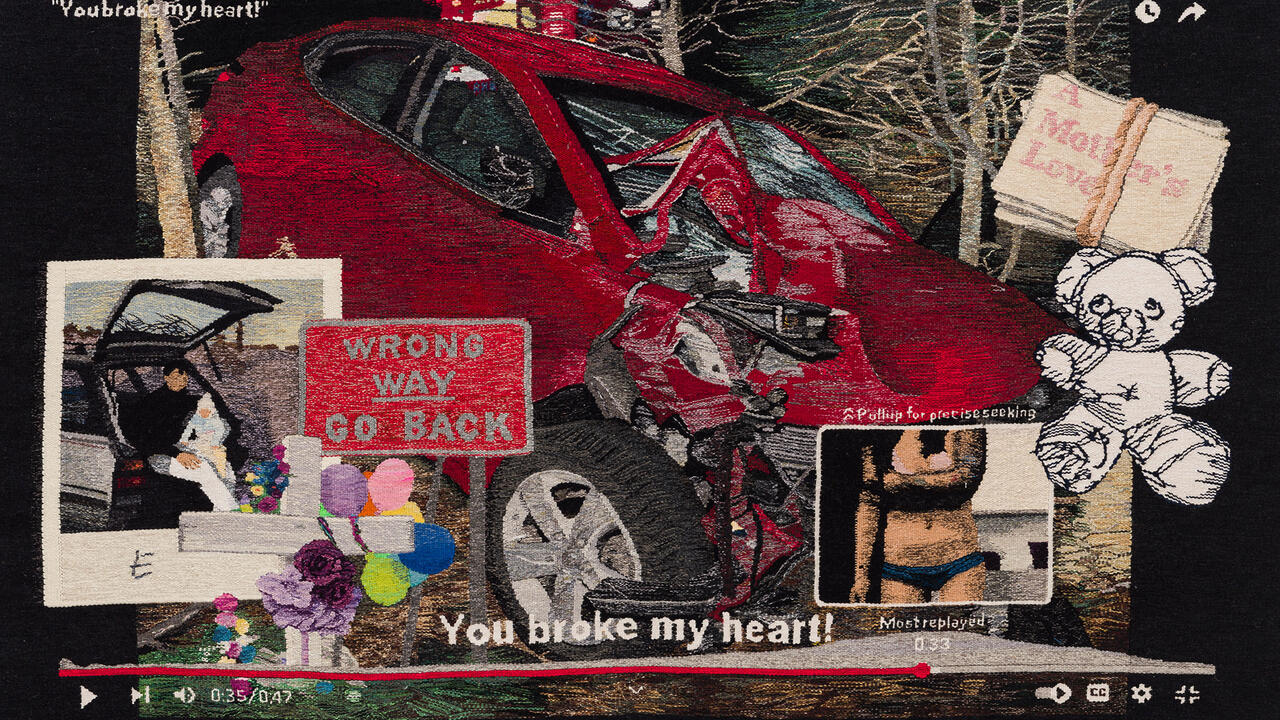Jessica Stockholder
Mitchell-Innes & Nash, New York, USA
Mitchell-Innes & Nash, New York, USA

Kitty litter and coffee mugs, painted fur and tyre scraps: the materials lists for Jessica Stockholder’s sculptures read like the home inventory of a mad packrat. For three decades, Stockholder has taken as provocation that cliché ‘everything and the kitchen sink’ – incorporating even plumbing into anarchic assemblages that resolve as astonishingly balanced compositions. Exuberantly colourful and formally promiscuous, her work is deliriously enjoyable to look at.
Stockholder’s ambitiously architectural show at Mitchell Innes & Nash, ‘The Guests All Crowded into the Dining Room’, features a selection of new works scattered around a wooden platform, sensuously curved to admit the gallery’s prominent support column, which ascends to a viewing balcony for a display of drawings mounted on geometric wall sections painted bright orange and pink. Several of the works continue Stockholder’s series of ‘Assists’, or sculptures that cannot stand up on their own. In Assist: Smoke and Mirrors (2016), two slender steel beams, supporting a cut of blue tarp and a mass of tangled copper wire, have been cinched to a lumpy beige sofa lounger by a bright green ratchet strap from the US Cargo Control hardware shop. The ‘Assist’ – the lounger – is interchangeable and not considered part of the work, though it felt like a wholly intentional, comic pairing with the sculpture’s airy, industrial materials. The term ‘assist’ will be familiar to football fans and, in light of the recent Paralympic Games in Rio de Janeiro, the sculptures reminded me of disabled athletes who, despite relying on prosthetics, often outmatch the grace and physical prowess of their non-disabled counterparts; see, for instance, how the heavy metal grille in Assist #4 (Carved Spaces) (2016) curls up towards the ceiling, like a gymnast on a pommel horse.

The ‘Assists’ are also nods to the supports of classical sculpture: recall the knotted trunk awkwardly glued to the right calf of the Apollo Belvedere or the creepy cherub dangling from the toga train of the Augustus of Prima Porta. Art history’s muscular marbles would crumble without these ungainly braces. Stockholder slyly upbraids the masculine pomposity of such sculptures by propping up her own with commonplace furniture: items that, as symbols of domesticity, can be both objects of affectionate care or anchors that arrest social and political mobility.
The works engage with art history on multiple levels. Security Detail (2016) consists of a satchel bag slathered in thick lilac oil paint, strung from steel cables on an open metal frame that, in turn, rests on a forlorn wooden footstool. One arm of this open frame, capped in a large red Lego brick, hovers over a wall-mounted panel painted a matching, fiery shade. ‘Kissing the wall’ (to borrow one of Stockholder’s favourite phrases), Security Detail refuses to break free from that fundamental flat support, cleverly commenting on sculpture’s shifting relationship to architecture since the classical era. This is neither a Renaissance bronze made for a frontally viewed tableau nor a fully freestanding sculpture. As Miwon Kwon has argued, Stockholder’s is an art ‘between the two-dimensional, pictorial flatness of painting and the three-dimensional spatiality and scale of architecture’. Stockholder has acknowledged this ‘confusion of boundary’; her work shows us how fun it can be to muck up the canon, with its dreary insistence on fixed categories.

‘Collision’ might be more appropriate than ‘confusion’ for such carefully considered work and, on an art-historical collision course, things are bound to get messy. At the show’s climax, on the end of the scaffolding, the smallest sculpture rests on a plinth: a pile of scalloped shells, punctured through with copper wire, atop a stack of sky-blue ice cube trays, like eggs smashed in their carton. In Stockholder’s hands, the sloppy aftermath of a kitchen fumble feels as enduring as an ancient bronze.










